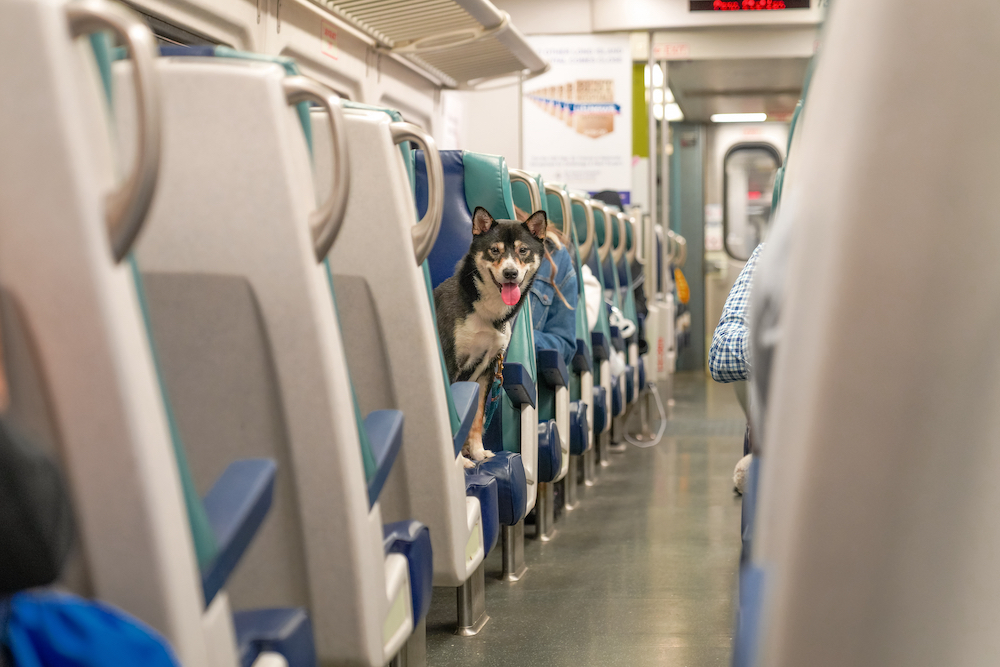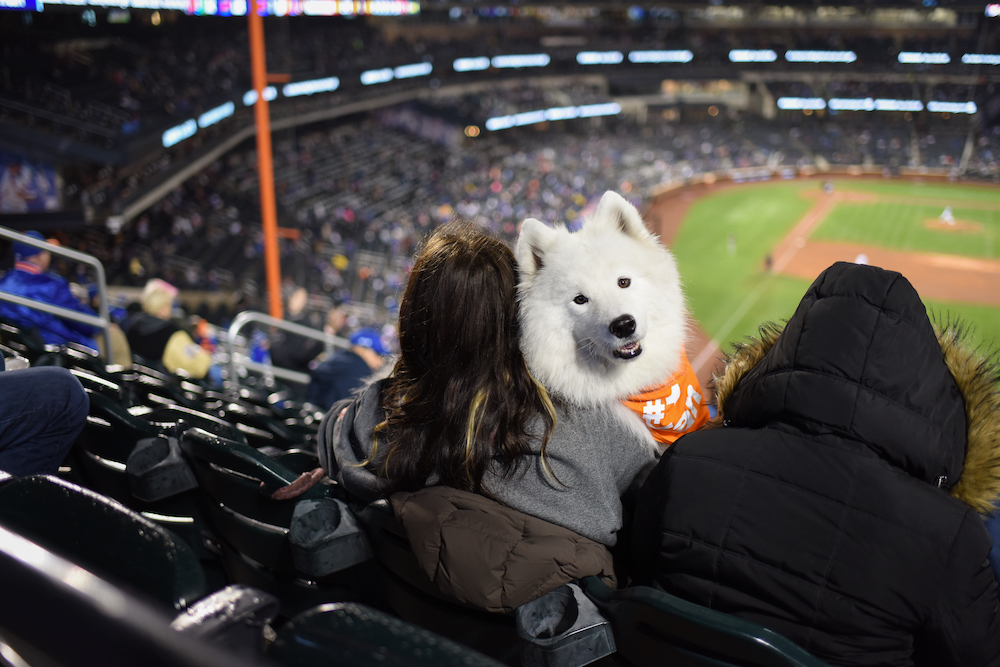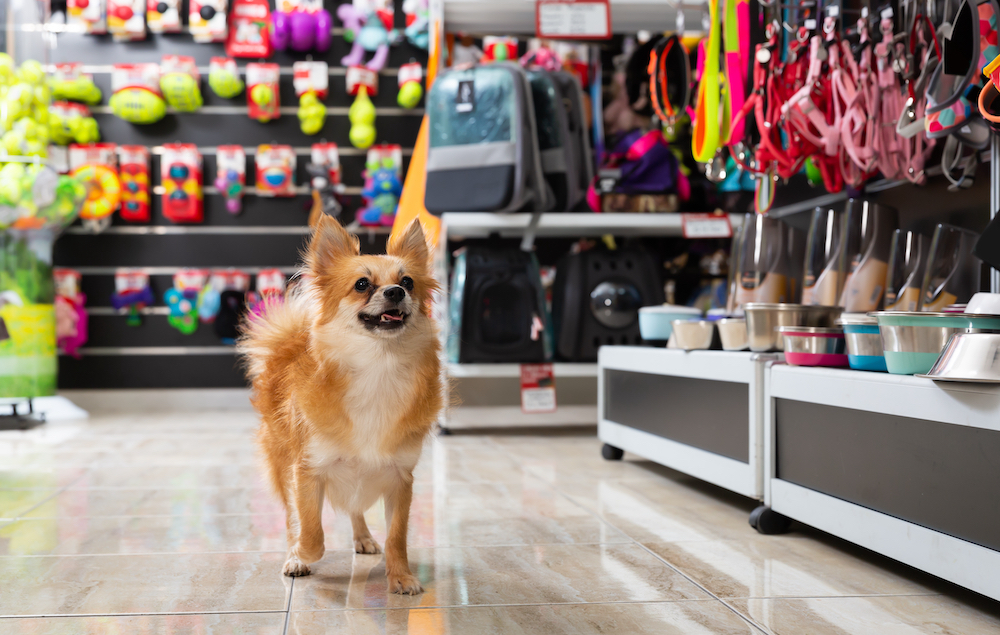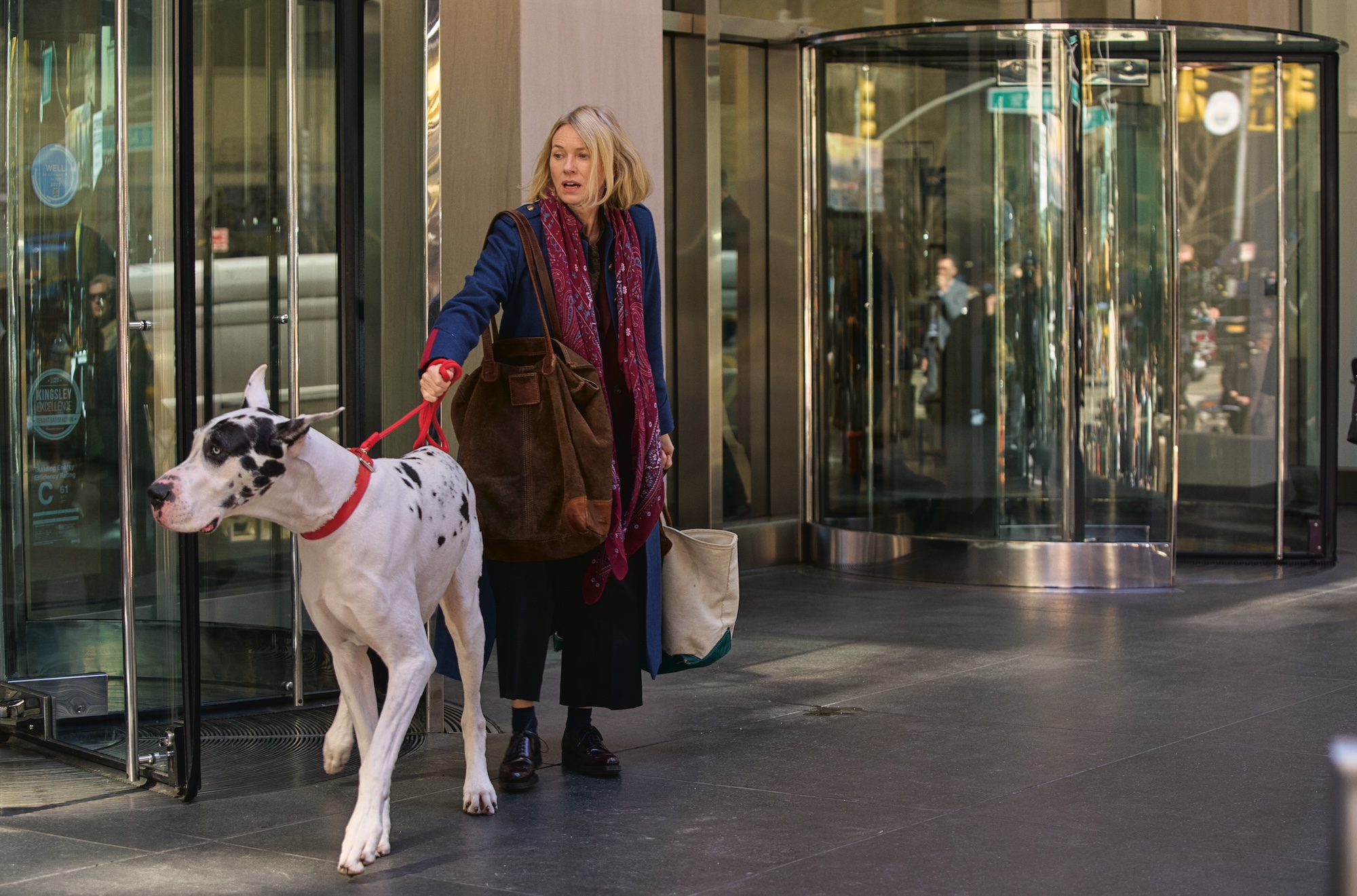If you live with a dog, there’s a good chance you wish they could be by your side everywhere you go. Many dogs agree; that’s why their snouts so often end up poking through any bathroom door left slightly ajar. It’s no mystery why this is—dogs and humans have bonded for thousands of years, and research and common sense both indicate that pups can help people feel less lonely and improve their lives in countless other ways.
That’s why we don’t just want our dogs with us for a stroll on the sidewalk or a romp at the park. We’d like to have them next to us while we eat at the exciting new restaurant around the block, go shopping for a fall wardrobe, or polish PowerPoint presentations in our office spaces.
Unfortunately, dogs can’t always come along—if only for their own safety and that of others. No one wants to put their dog through unnecessary stress, and we’ve all seen dogs who are miserable in noisy or crowded environments. Maybe we’ve even made the mistake of putting them in a too-demanding spot ourselves.
So how do you decide whether your dog should keep you company on an outing? While there are a lot of considerations that depend on the particular activity your dog might participate in, the main questions pretty much remain the same:

1. Are companion dogs allowed?
Before you start weighing the pros and cons for yourself and your canine friend, check the rules wherever you’re going. Often, non-service dogs won’t be allowed. By law, service dogs—those who are trained to perform a specific function for a person with a disability—are allowed almost everywhere.
But even if you’d prefer that a certain establishment or event allowed you to bring your dog, and they don’t, you should not violate their rules by pretending that your companion is a trained service animal. Doing this creates issues for people who really need such dogs to help them navigate the world every day. While emotional support dogs and therapy dogs play important roles in humans’ lives, they’re not the same as service dogs—they don’t get the same training or perform the same tasks. If pet dogs aren’t allowed somewhere, the best thing you can do is leave yours at home. If you can’t go without them—and, believe us, we get it—then skip the outing.
Lots of restaurants allow dogs in their outdoor dining areas, and a few even accommodate them inside. Some stores are okay with pets on premises, but others forbid them. If you’re not sure, call ahead to ask.
2. Is this right for your dog?
If you have the option to bring your dog into a public place, you’ll have to grapple with whether your dog will benefit from being there. Sometimes that’s a complex thing to consider. For example, how much discomfort in transit is it okay for a dog to tolerate if they’d rather be with you during your long stay out of town, and when would they be better off hanging out in your house with a friend looking after them? It’s obvious that you wouldn’t fly a dog in the cargo hold of a plane for a weekend getaway, but there are cases with gray areas that may not have one definite “right” answer.
Take your pup’s perspective: Will they have to remain calm for a long period of time, and will they be able to do so if strangers pass by? Will there be something fun—like a favorite chew or toy—to soothe and entertain them? Can they be trusted to behave responsibly around other dogs they might meet in public? Will they try to eat dangerous items off the ground? Will they be exposed to unusually high or low temperatures or loud noises that could be distressing or dangerous to them?
Once you’re in a new environment with your dog, watch them for clues about their state of mind. “Every person who lives with a dog should learn what their dog looks like when he’s happy and when he’s stressed,” says Dr. Clive Wynne, Director of the Canine Science Collaboratory at Arizona State University and author of the book Dog Is Love. “Some things most dogs will do as they become unhappy with a situation is first show reluctance to move forward, maybe ‘stalling’ and trying not to be shifted. Then there can be downward ears, tucked tail, possible trembling and whining… The key thing is to pay attention to your own dog—he may have his own ways of telling you he’s not happy.”
3. Is this right for the other people and animals who will be there?
The rules for bringing a dog onto Metropolitan Transit Association trains and buses in New York include, among other things, that they be “carried in a manner which would not annoy other passengers.” While this is funny—annoyance is in the eye of the annoyed—in another way it’s reasonable. If you’re bringing your dog somewhere, it’s important that they be allowed. And it’s crucial that they won’t be tormented by the experience. But those two conditions, while necessary, are not sufficient if you’re aiming to be an exemplary citizen. You should also think about everyone else who will be around. If there’s something about your dog’s behavior that might make it harder for others to have a good time, it’s advisable to make different plans.
Sometimes you can help prepare your dog for public events by using counterconditioning and practicing certain skills ahead of time. If you’re bringing your dog to most public places, they should have basic commands down—they should come when called, sit and lay down when you ask, drop items when you tell them to, and, in general, follow your directions cheerfully. They should also be socialized to happily interact with the stimuli they’ll encounter at their destination.
These steps can achieve two goals at once: increasing the odds that your dog will be able to enjoy this new adventure with you, and checking whether they’re ready to do that right now.
If you do have to leave your dog behind—and most of us do from time to time—there are ways to help soothe their separation anxiety and keep them contented until your return.
Should you bring your dog: advice for specific locations and events
There are an infinite number of places where you could bring your dog, but we have listed a handful of examples below to give an overview of the types of challenges and opportunities that may present themselves during various human/canine excursions.
An office
The Farmer’s Dog runs a dog-friendly office, and the benefits of having dogs at work are well-documented. But whether your dog ought to hang out amid the cubicles and fluorescent lighting at your workplace depends upon your particular workplace and dog.
Our rules for office dogs may lead you to some valid questions regarding your own furry protege’s possible internship. We don’t allow human staffers to bring foods containing chocolate, xylitol, macadamia nuts, or grapes. Most offices, even if they allow dogs, won’t have regulations that are so canine-centric, so you’ll have to take whatever precautions are necessary to keep your dog away from ingredients that might harm them. And, no matter what, you want to take responsibility for your dog’s safety—even with the best intentions, accidents may happen.
Your dog’s temperament could also be a factor. We think it’s adorable when dogs bark in the middle of meetings, but your mileage may vary.
A concert or another live performance
Unless you have a service dog, you probably won’t bring your dog to an indoor performance with amplified sound. There are many reasons for this. Among them are the tight quarters, the possibility of non-dog-friendly substances spilled on the club floor, loud noises—and, typically, rules against dogs being in the space at all. Sometimes indoor events are designed specifically for humans who bring their dogs. But, for the most part, we’re talking about outdoor concerts here—some of which may allow dogs.
In that case, one thing to think about is the loud sound at a concert. When we wrote about caring for deaf dogs, we spent a little time discussing how to prevent volume cranked up to 11 from harming your pup’s ears. You’ll have to exercise a little judgment—but a good basic rule here is that if something seems loud to you, you’ll have to protect your pal as well. Outdoors, one thing you can do is stay further away from the source of the sound. There are also earmuff-like products made to reduce the decibel level getting into your dog’s ears. Talk to your veterinarian about which of these might be safe and useful for your buddy.
A movie
As with concerts, most indoor movies won’t accommodate non-service dogs. But there are occasionally special screenings for humans and their dogs, and many outdoor cinema events will welcome canine cineasts. This includes drive-in movies, at which you can often watch either inside and outside of your car. In those cases where dogs are allowed, ask yourself the same basic question you’d pose for a concert: Will your dog be happy in this situation? And, on your end, will you be able to enjoy the film while still attending to your dog’s needs?
A restaurant or bar
Among outdoor dining’s greatest assets is that you can often bring your pooch along. We’ve perused the menu of reasons you might want to do so, or not. How your dog handles certain spaces, strangers, and the temptation of food that’s not for them will all factor into a responsible decision.
A wedding, sweet 16, bar mitzvah, family reunion, quinceañera, or other party
We wouldn’t recommend toting a Great Dane along with you as your plus-one to any old wedding—certainly, the couple whose union you’re celebrating should explicitly welcome dogs to their nuptials. But assuming they do, you’ll still have to reckon honestly with your dog’s tolerance for large groups of people, tempting food and drink falling to the ground, and loud exhortations from the DJ for everyone at Table 6 to get up and dance, he’s talking to you.
An airplane, train, or car—and the hotel or Airbnb when you get where you’re going
There are a lot of rules governing dogs on airplanes, and you can read up on them in our guide to the subject. Generally, smaller dogs are allowed in the cabin of most flights if you do some paperwork, talk to the airline, and keep them in an approved carrier. Larger dogs usually have to travel in cargo, which is a much more stressful endeavor. But even in-cabin travel doesn’t agree with every dog, so think hard before you start racking up frequent-flier miles for your pal. The article linked below has more thoughts on travel by train and car, as does our guide to taking a road trip with your dog.
Many hotels and Airbnbs permit dogs, but you should verify in advance that you’re allowed to bring yours. Once that’s settled, consider their safety and comfort in an unfamiliar place.

A sporting event
The Farmer’s Dog has sponsored Bark in the Park (baseball) and Pups at the Pitch (soccer) events, so we love seeing dogs at stadiums when they’re up for it—and plenty of major- and minor-league sports teams have days when they welcome dogs to some sections. However, the usual caveats apply, plus some others. Among them: You’ll have to remain alert to protect your dog from anything that flies into the stands. (But, once that home run ball stops moving, they may be very happy to hold it for you).

A store
Is your dog going to knock over items in the store, endangering themselves and perhaps making you responsible for some broken merchandise? Will shopping carts’ wheels, shoppers’ feet, or scattered refuse on the ground present hazards to them? And, of course, are dogs even allowed in the store at all? Many shops, especially those that sell food, prohibit companion dogs either as a matter of preference or due to legal requirements. These are some of the matters you’ll want to consider before bringing your dog along as you check off the items on your shopping list.
Sharing new places and experiences with your dog is one of the fun, rewarding parts of having one. Use good judgment about which situations will be safe and pleasant for them. But, once you figure out where they like to go, be with them as much as you can. They’ll appreciate it.




